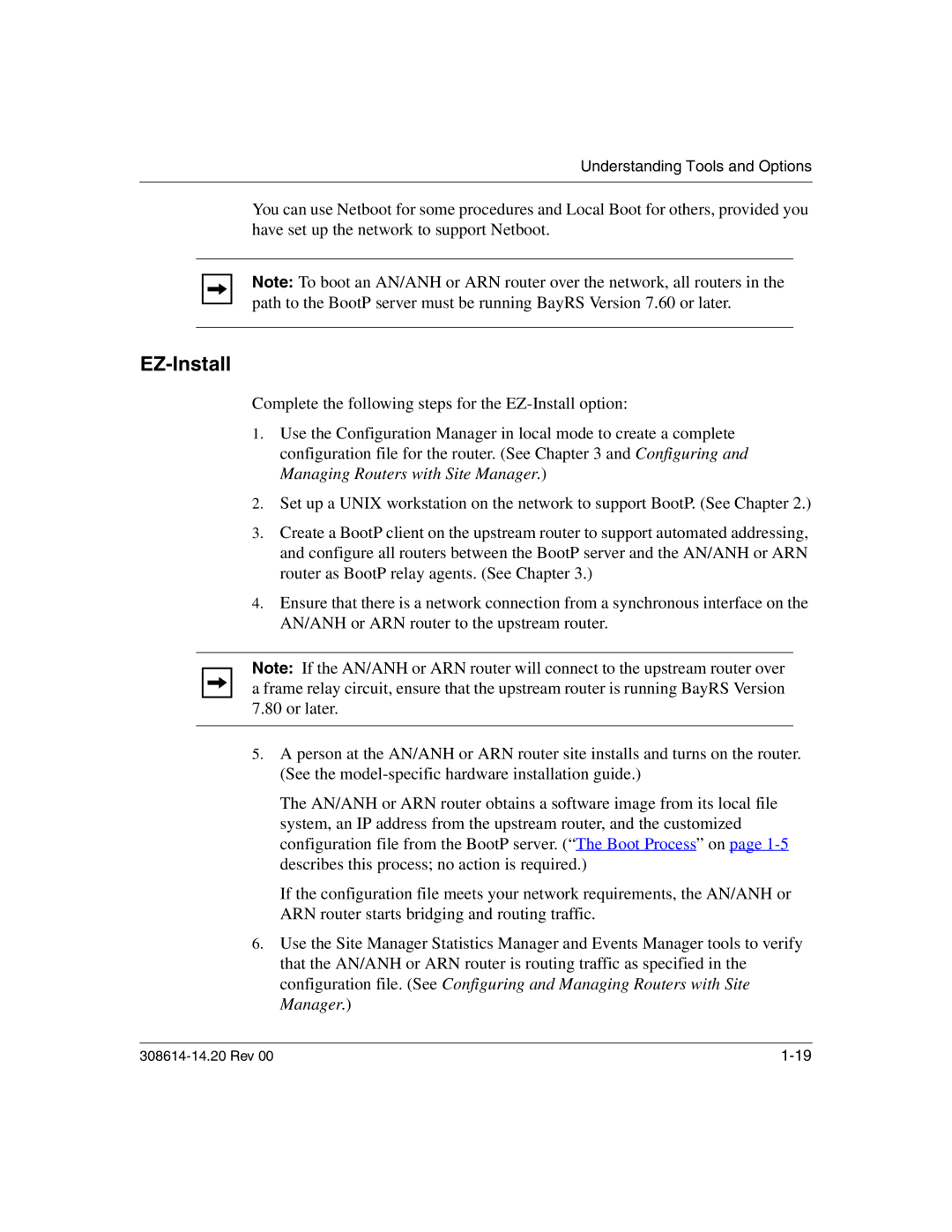
Understanding Tools and Options
You can use Netboot for some procedures and Local Boot for others, provided you have set up the network to support Netboot.
Note: To boot an AN/ANH or ARN router over the network, all routers in the path to the BootP server must be running BayRS Version 7.60 or later.
EZ-Install
Complete the following steps for the
1.Use the Configuration Manager in local mode to create a complete configuration file for the router. (See Chapter 3 and Configuring and Managing Routers with Site Manager.)
2.Set up a UNIX workstation on the network to support BootP. (See Chapter 2.)
3.Create a BootP client on the upstream router to support automated addressing, and configure all routers between the BootP server and the AN/ANH or ARN router as BootP relay agents. (See Chapter 3.)
4.Ensure that there is a network connection from a synchronous interface on the AN/ANH or ARN router to the upstream router.
Note: If the AN/ANH or ARN router will connect to the upstream router over a frame relay circuit, ensure that the upstream router is running BayRS Version 7.80 or later.
5.A person at the AN/ANH or ARN router site installs and turns on the router. (See the
The AN/ANH or ARN router obtains a software image from its local file system, an IP address from the upstream router, and the customized configuration file from the BootP server. (“The Boot Process” on page
If the configuration file meets your network requirements, the AN/ANH or ARN router starts bridging and routing traffic.
6.Use the Site Manager Statistics Manager and Events Manager tools to verify that the AN/ANH or ARN router is routing traffic as specified in the configuration file. (See Configuring and Managing Routers with Site Manager.)
